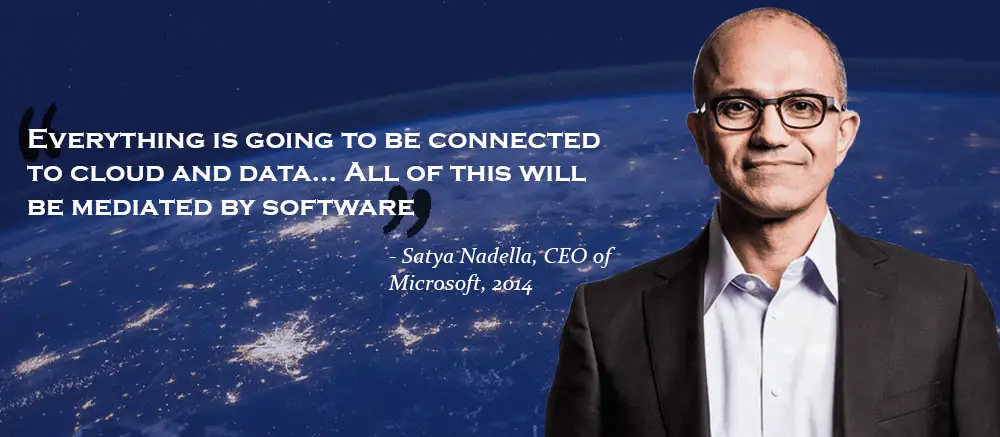Occupancy sensors—driving workplace transformation?
The world of work has changed significantly in the last 18 months. Workplace transformation has happened by accident as much as design. Whether these changes have been driven by a
Read more
Prescient words indeed. Increasingly we are living in a world where we are interacting with, and generating, data all the time.
A typical morning commute is largely spent in the cloud – browsing Facebook, posting selfies to Instagram, checking email – where once it may have involved reading a newspaper or a book.
These seemingly benign activities are generating a wealth of data which can be used to target advertising with pinpoint accuracy or, in the case of Cambridge Analytica, allegedly influence elections.
2001 Has Come True
Technology has become all-pervasive in often unexpected ways. A few years ago, the thought of speaking to a computer would have seemed either preposterous or Stanley Kubrick stuff. Now, we’re talking to Alexa in the kitchen.
From the initial novelty of playing Spotify or switching on the lights, technology has moved on to the extent that Google now has the capability to conversationally handle two requests at a time and will soon be able to make calls on its owner’s behalf.
With these devices becoming commonplace it’s easy to forget you are throwing out commands not actually to a physical device but to the cloud itself.
As a recent article in Medium notes, the technology to process and understand the nuances of language – it’s a combination of speech recognition and artificial intelligence (AI) – is complex with so many permutations of words to understand as well as their context.
A combination of faster consumer broadband and constantly learning AI has meant the processing power required is now readily available.
The Alexa or Home device is necessary as a physical interface but it’s the cloud that’s doing the heavy lifting – a voice search uses 100 times the computational power of a simple text-based web search.
Becoming part of a digital bubble
Increasingly, the notion of a built environment and the internet is becoming blurred.
With access to public wi-fi it is now possible to be present in the physical world as well as having a reach that is global.
Our personal bubble is no longer constrained to the immediate vicinity – as commentators Laurent Beslay and Hannu Hakala have noted, the notion of a private and public space is blurred. They cite the example of how a murder scene is part of a digital detection bubble that expands to include information from smartphones, CCTV and other sources.
In the world of work, new technology has blurred the physical and digital boundaries. Thanks to powerful mobile technology and wi-fi, work is no longer somewhere you go but something you do.
This has impacted on workplace design as it has become more centred on activity-based working with a move away from traditional open plan offices to more collaborative spaces. A recent study commissioned by IFMA “Alternative Workplace Strategies” found that 58% of respondents had implemented an alternative workplace program to improve collaboration – up from 39% in 2013 which indicates quite a cultural shift in just 5 years.
Workplace analyst Ryan Anderson has suggested that increasingly:
“workers should be embraced as consumers”.
That’s consumers with their own ways of doing things using consumer technologies, such as Dropbox, that are often simpler and more efficient than their corporate counterparts.
What’s more they are also consumers of the space they inhabit.
The growth of digital transformation
Technology is not just changing processes relating to employees it is changing them across the board. At its heart, digital transformation constantly challenges the status quo about how companies transact with employees, customers, suppliers, partners and stakeholders.
Digital transformation delivers tremendous impact across areas such as:
These are all tangible areas which are being driven by the adoption of agile technologies. In a competitive world where technology is moving at a lightspeed pace then it is imperative not to be hindered by legacy systems.
What the rise of IoT actually means for our workplaces
Beslay and Hakala suggested that the internet would become more embedded into the built environment. Their prediction has come true with the rise of the Internet of Things (IoT).
For facilities and real estate professionals, the IoT offers a tremendous opportunity for gathering real-time information about their space and its consumers.
With such systems in place it is possible to move from reactive management to a more predictive style. One example of IoT in action is sensor technology which enables facilities managers to accurately measure not only how much space is being utilized but how.
Letting technology enable radical decisions
Sensors can inform radical decision-making to save costs – for example, if managers analyze past data to determine that usage of hot desks is 50% lower on Mondays, they can shut down whole floors that day each week to save on worker and energy costs.
Sensor technology is also a gift for the “consumers” because they can see on a digital floorplan where the available workspace is and check in/out automatically as the sensors detect their presence. Time wasted on finding a desk can be invested in knowledge work.
As well as sensor technology, other technology is coming into play such as beacons. It is now possible for the A/V department to use this technology to track in real-time where their equipment is – useful when dealing with expensive and covetable laptops for example.
Our conclusion
It seems that Microsoft’s Satya Nadella was right – we are already living in a world where the cloud and the IoT are empowering our personal and working lives, and that looks likely to continue. When it comes to adopting and adapting this technology, it seems the only limit is our imagination.
The physical world and the digital realm are blurring in many ways:
It has taken seven years for virtual assistants to become mainstream consumer products. Who knows what the year 2025 holds?